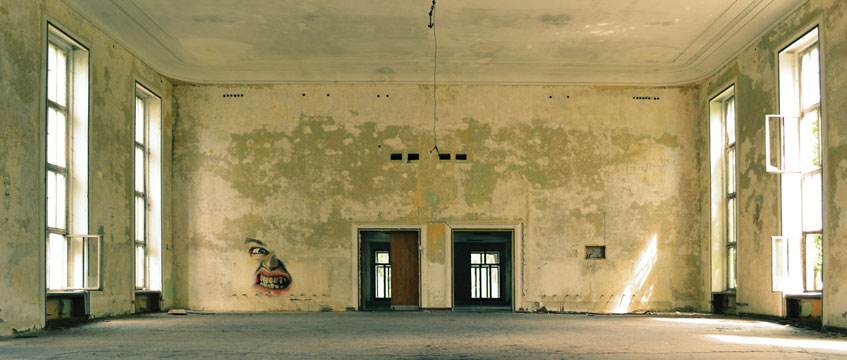It is not entirely clear when the phrase “vacant possession” entered the legal dictionary. But it is referred to in some of our oldest law reports and it is now generally accepted that the meaning of the requirement to give vacant possession of property is threefold. The premises must be free of people, chattels and legal interests.
Until recently, disputes about physical impediments to the landlord’s use of premises following the exercise of a break right in a lease have focused on whether a tenant has removed everything that should have been removed from the property. But in Capitol Park Leeds plc v Global Radio Services Ltd [2021] EWCA Civ 995; [2021] PLSCS 119 the landlord claimed that its tenant had removed far too much from its building.
Too vacant
The case concerned a broadcasting studio in Leeds. The tenant had sold its business in 2014. But the premises were surplus to the incoming tenant’s requirements. So it sought to exercise a break right in the lease, which was conditional on the tenant giving “vacant possession of the premises” on the break date.
Unfortunately, the tenant had stripped out a range of items, leaving just an empty shell. And the landlord claimed that vacant possession had not been given because the building was dysfunctional and unoccupiable.
The High Court accepted the landlord’s arguments. The expression “the premises” was defined to include both the original building and “all fixtures and fittings at the premises whenever fixed”, and the tenant had failed to provide vacant possession because the items stripped from the unit were part of the original base build specification or, perhaps, elements of the building itself. So the lease remained on foot and would continue until the end of the term.
Condition
The legal eyebrows raised in response to the decision have been lowered, now that the Court of Appeal has overturned the decision. Lord Justice Newey, who spoke for the court, accepted that the building was left in a dire state, but ruled that this did not preclude the valid exercise of the break clause.
There was a telling contrast between the yielding up provision in the lease and the break clause. The tenant was required to yield up the building at the end of the term “with vacant possession in a state of repair condition and decoration which is consistent with the proper performance of the tenant’s covenants”. But there was no such condition in the break clause – and the obligation to give “vacant possession” requires a property to be free of “people, chattels, and legal interests”. It does not refer to its physical condition.
Key points
- The exercise of a break right was effective, even though the tenant had yielded up considerably less than the premises, as they were defined in the lease
- The building had been stripped of essential fixtures and fittings, but the requirement to give “vacant possession” requires a property to be free of “people, chattels, and legal interests”, and does not refer to its physical condition
The landlord’s interpretation of the lease had implications that could render the lease internally inconsistent and did not make business sense. For example, if there were to be a fire before the break date, the lease required the landlord to reinstate. So the tenant’s repairing obligations would not apply. Nonetheless, it would be unable to give back the “premises” in their entirety and, consequently, would be unable to take advantage of the break clause.
Alternatively, suppose that an intruder were to damage the property just before the break date. The lease could still terminate – unless the damage happened to involve the loss of a fixture. If the fixture remained somewhere in the building, it might perhaps be suggested that the tenant could still give vacant possession. However, there could be no question of its doing so if the intruder had removed the item from the building.
The landlord had argued that the lease defined “the premises” as including the building that was there when the lease was granted and all its fixtures and fittings, except tenant’s fixtures. But the court preferred to apply Peel Land & Property (Ports No 3) Ltd v TS Sheerness Steel Ltd [2014] EWCA Civ 100; [2014] 2 EGLR 21 and to interpret the term “the premises” as meaning the premises as they were from time to time.
The conditions in a break clause must be fully satisfied. However, this did not mean that they must be construed adversely against the tenant. The landlord was not without a remedy for the deficiencies in the building. The break clause provided that termination was to be without prejudice to any right of action in respect of any breach of the lease and the landlord could seek compensation for whatever loss it had suffered as a result of the tenant’s failure to return the building in a proper state.
Allyson Colby is a property law consultant
Farewell to Allyson Colby
For more than a decade, Allyson Colby has provided unparalleled coverage of commercial landlord and tenant, real property and conveyancing and telecoms cases in this column and in Practice Points. She has covered blockbuster judgments including S Franses Ltd v The Cavendish Hotel (London) Ltd [2018] UKSC 62; [2019] EGLR 4 and Lawrence v Coventry (t/a RDC Promotions) [2014] UKSC 13; [2014] 1 EGLR 147 and has kept readers entertained with her contributions to the annual festive round-up. She has been a prolific and much-loved member of the Legal Notes team and she will be hugely missed following her recent retirement. Stepping into her shoes is someone equally accomplished: Louise Clark, a property mediator and, until recently, partner at Charles Russell Speechlys. Regular readers will also recognise her contributions to EG’s Legal Q&A column. Louise will pick up where Allyson left off and her columns will feature from the autumn.










